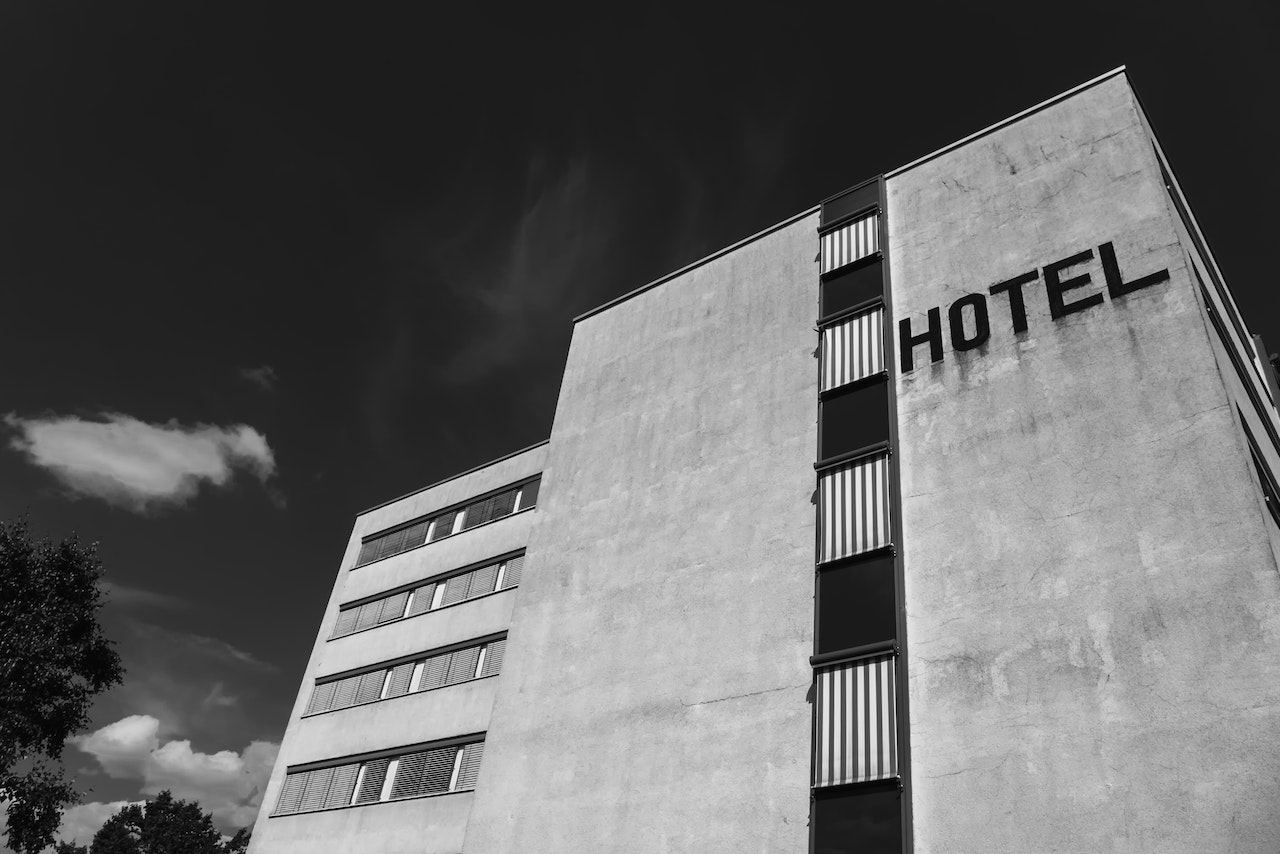Recent chatter around the real estate water cooler suggests an Airbnb ‘crash’ is on the horizon. This notion stems from data cited by housing influencer Nick Gerli, indicating a nearly 50% drop in revenue for the home-sharing giant in certain markets. However, like any statistic in the wild, context matters.
AirDNA, a leading provider of short-term rental data and analytics, throws a counterpunch at these figures, arguing that while revenue per listing is down, it’s not by the purported third or more in the markets under scrutiny. As per Airbnb, the company’s data paints a different picture, showing more guests traveling via their platform than ever before.
Renowned investor and author Robert Kiyosaki has recently sounded the alarm on the potential for Airbnb’s stock fluctuations to ignite a broader housing market downturn, especially in light of increasing mortgage rates and sweeping Airbnb regulatory changes. Meanwhile, New York City’s recent change in short term rental regulations has led to a palpable decline in short-term listings, adding another layer of complexity to Airbnb’s market health. Financial expert Michael Gayed adds to the chorus of caution, suggesting that the reinstatement of student loan payments could serve as an unexpected negative catalyst for Airbnb and, by extension, the real estate sector. These emerging viewpoints indicate that external economic and regulatory factors could introduce new volatility into the Airbnb landscape.
But let’s not sweep under the rug the bearish sentiments that still persist.
Airbnb supply in America has surged over the last two to three years, particularly in cities like Phoenix. Some argue that this growth has strained housing market inventory, a situation predicted to take a turn as Airbnb owners might start selling their properties in a perceived market correction.
The Health of the Short-Term Rental Industry
In contrast to the ‘crash’ narrative, experts at AirDNA view the short-term rental (STR) industry performance as robust. According to them, the STR industry is expected to maintain an overall occupancy rate of 57% for 2023, even outperforming pre-COVID levels.

If we zoom out and consider the bigger picture, a 1% revenue drop for the rest of the year, with no expected growth in 2024, doesn’t exactly spell catastrophe. Instead, it suggests a gradual normalization following the unusual demand patterns triggered by the pandemic.
Discussion on the Airbnb collapse can inform strategies for capitalizing on the best rental markets.
Airbnb Average Occupancy Rate
In the midst of fluctuating market scenarios and speculated ‘crashes’, it’s essential to zero in on one crucial indicator of Airbnb’s health and viability – the average occupancy rate. Occupancy rates serve as a critical barometer for gauging market performance and predicting future trends.
AirDNA paints a favorable picture of Airbnb’s occupancy outlook for 2023. The projected figure stands at an encouraging 57%, even outperforming the pre-COVID rate of 55%. It is important to note that this figure represents a return to a more stable and sustainable occupancy level following the COVID-induced flux.

To put this in perspective, despite a slight dip from the 2021 highs (an anomaly attributed to unique COVID-related circumstances), the 2023 prediction demonstrates strong market resilience. Furthermore, these figures are a testament to the adaptability of both Airbnb and the STR industry as a whole in navigating the pandemic’s disruptions and readjusting to the new normal.
The implications of the Airbnb market collapse may affect decisions regarding VRBO renters insurance.
Airbnb Real Estate Crash
An increasingly speculated scenario is an “Airbnb real estate crash”. This theory suggests that as more Airbnb hosts feel the pinch of revenue dips and market saturation, they might consider selling their properties. If a large number of hosts start doing this simultaneously, the housing market could potentially be flooded with properties, causing prices to tumble and sparking a real estate crash. While this might seem alarming, it’s essential to remember that this is merely a theory at this stage, with no concrete signs of it materializing.
In fact, an Airbnb-induced real estate crash would be contingent on a perfect storm of conditions. The vast majority of hosts would need to decide to sell at once, and there would need to be insufficient demand to absorb the sudden influx of properties on the market. Given the current strength of the housing market and the fact that many Airbnb hosts have diversified revenue streams, this scenario remains quite unlikely.
Is the Airbnb Market Saturated?
Another question that has been floating around is whether the Airbnb market is becoming saturated. The market has indeed witnessed a surge in Airbnb supply, with an increasing number of property owners turning their homes into short-term rentals. While this has enhanced guest choice and spurred competition, there are concerns that the market might be reaching its saturation point.
Market saturation occurs when the volume of a product or service in a marketplace has been maximized. In the context of Airbnb, market saturation would mean that there are too many rentals available, resulting in decreased profits for hosts. However, it’s important to note that Airbnb operates in a dynamic market, with the demand and supply of rentals varying significantly across different locations and times.

While certain cities or tourist hotspots might experience temporary oversaturation during off-peak seasons, this doesn’t necessarily mean that the Airbnb market as a whole is saturated. The market’s resilience and adaptability, coupled with continued global travel demand, suggest that there’s still room for growth and profitability in the Airbnb market.
The discussion of a potential Airbnb market collapse could segue into reviewing the best alternatives for property listing.
Airbnb’s Role in the Housing Market
As Airbnb continues to expand its foothold, it’s also important to consider its impact on local housing markets. Critics argue that the proliferation of short-term rentals contributes to housing shortages and drives up prices, making it harder for residents to find affordable housing. On the other hand, proponents point out that Airbnb provides a valuable source of supplemental income for hosts and can help to stimulate local economies by attracting tourists. Balancing these competing interests will be a critical challenge for cities and regulators as they seek to manage the impact of Airbnb and other short-term rental platforms on local housing markets.
A Glimpse at Airbnb’s Crash History
As we contemplate the future of Airbnb, it’s instructive to take a cursory glance at the platform’s historical stumbles. In 2020, the advent of the COVID-19 pandemic led to a drastic drop in bookings, causing a momentary dip in Airbnb’s valuation. Additionally, regional crises, such as regulatory upheaval in cities like Barcelona and Berlin, briefly put a dent in the platform’s global expansion ambitions. Furthermore, natural disasters like hurricanes and wildfires have occasionally disrupted Airbnb’s operations in specific locales. While these incidents have been setbacks, it’s crucial to note that Airbnb has displayed remarkable resilience, bouncing back each time to navigate an ever-complex market landscape.
But why does this matter for property managers?
An impressive average occupancy rate signifies steady demand and lucrative opportunities within the STR industry. Even with a minor predicted dip in revenue, property managers can remain confident about their investments’ sustainability.
Understanding these occupancy trends also allows property managers to plan and strategize effectively. It helps forecast demand, set competitive pricing, and ultimately optimize property profitability.
Strong Fundamentals Despite Market Fluctuations
A critical facet often overlooked is that the fundamental indicators in the STR market are holding strong. Travel desire is buoyant, and remote work has created a more mobile population than ever before. Moreover, around 20% of Airbnb listings are private or shared rooms, reducing the pressure on housing inventory.
Moreover, hosts across the country are still reporting robust revenues. This trend mitigates the risk of a wave of forced sales, which could disrupt the housing market.
Navigating Potential Market Shifts
Undeniably, the dynamics of any market can change rapidly due to various external factors, such as economic recessions. But how disruptive would a sudden nosedive in demand be for the STR market?
Consider the events of 2020 as an illustrative case. Listings fell by 25%, and many markets saw a significant decline, but this failed to disrupt the broader housing market. It’s a testament to the resilience inherent in the STR landscape.
With the current data revealing around 1.4 million STR listings in the U.S. versus 600,000 active for-sale listings, even a sudden availability of all STR listings is unlikely to trigger a crash.
The Future of Airbnb: Artificial Intelligence and Beyond
As we navigate the currents and undercurrents of the Airbnb landscape, it’s intriguing to cast our gaze to the horizon – to the potential impact of technological advancements, particularly the rising influence of Artificial Intelligence (AI).
AI, with its transformative potential, is poised to redefine the Airbnb experience, not just for guests but also for hosts and property managers. For instance, AI-powered pricing algorithms can analyze vast amounts of data, factoring in variables such as location, time of year, special events, and competitor pricing, to suggest the optimal price for a listing. This will assist hosts and property managers in maximizing their returns without needing to manually analyze complex market trends.
Likewise, AI-driven customer service bots can provide 24/7 support, addressing guest queries instantly and efficiently, thereby enhancing the customer experience and reducing the load on hosts. Furthermore, predictive analytics, a branch of AI, could aid in anticipating demand fluctuations and adjusting strategies proactively, a boon for property managers seeking to optimize occupancy and profitability.
The Verdict: Do We Brace for Impact or Business As Usual?
Let’s not forget that a majority of Airbnb inventory, especially in the top 50 metros, is not available full time. So even if there is a shift from STR to sales, it’s unlikely to cause an inundation of properties into the housing market.
Even in the scenario of an Airbnb inventory shock, markets saturated with Airbnb properties like Phoenix would remain resilient due to their high rates of new home constructions. In essence, the broader housing market needs more inventory, but it’s unlikely that this demand will be met by struggling Airbnbs.
In summary, the STR market, including Airbnb, shows resilience and adaptability despite fluctuations and predictions. While property managers should remain aware of market dynamics and adjust strategies accordingly, the situation is far from a doomsday scenario for the STR industry.
